如何在SchedulerX 2.0平台上托管ElasticJob任务
分布式任务调度SchedulerX 2.0兼容开源ElasticJob任务接口,您无需修改代码,即可将ElasticJob任务在SchedulerX 2.0平台上进行托管。本文介绍如何在SchedulerX 2.0平台上托管ElasticJob任务。
背景信息
ElasticJob基于Quartz开发并且依赖ZooKeeper作为注册中心,是一款轻量级、无中心化的分布式任务调度框架,目前已经通过Apache开源。更多信息,请参见ElasticJob。
SchedulerX 2.0优势
丰富的可视化能力
查看用户大盘
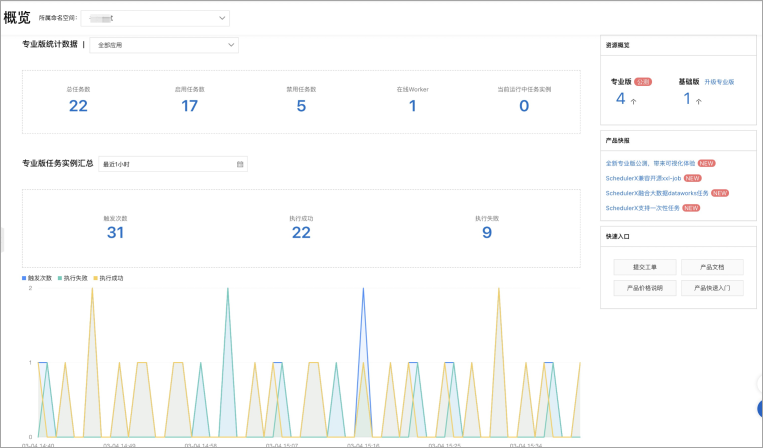
查看任务历史记录

查看用户运行日志
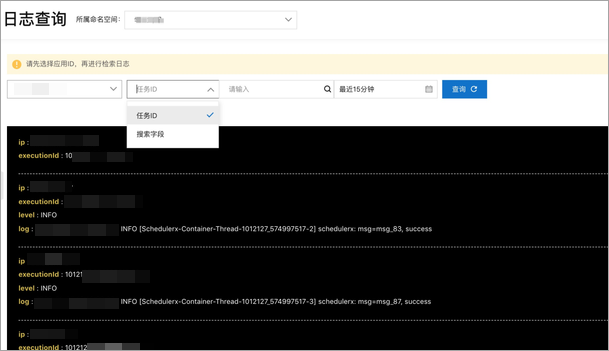
查看任务运行堆栈
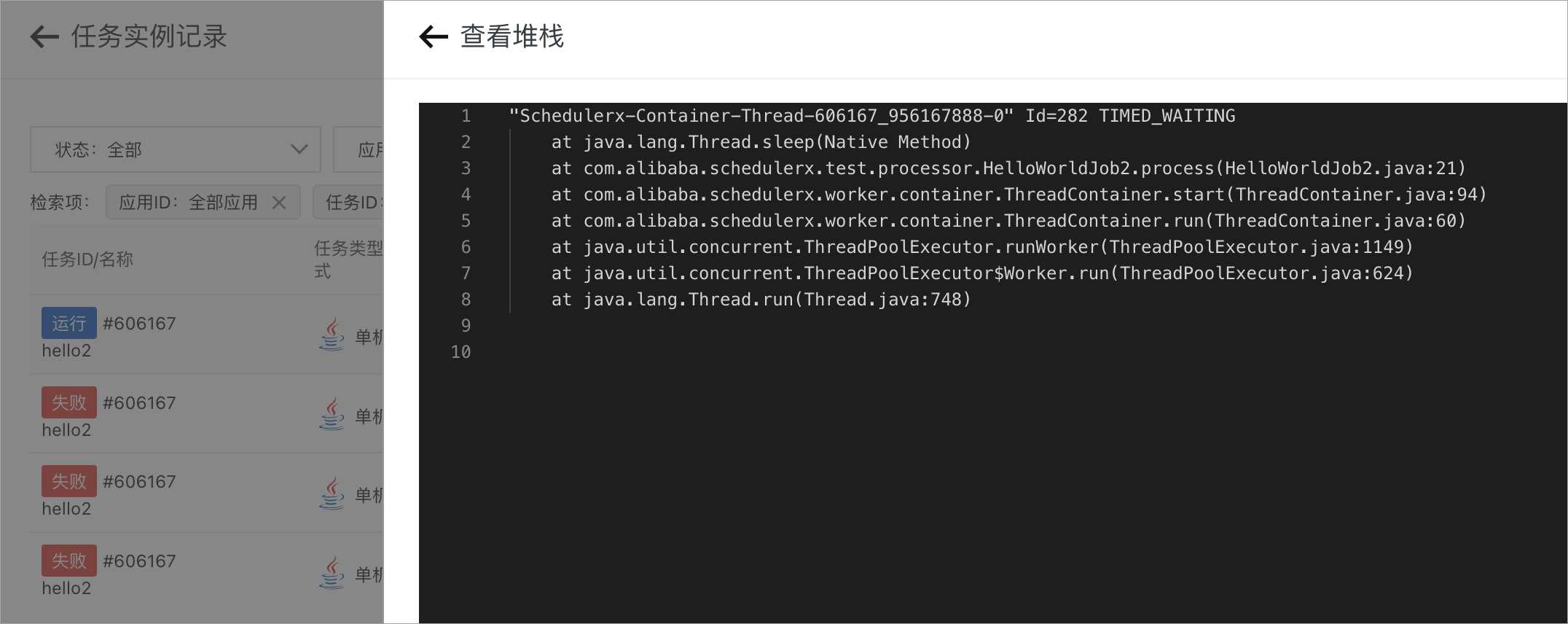
查看任务操作记录
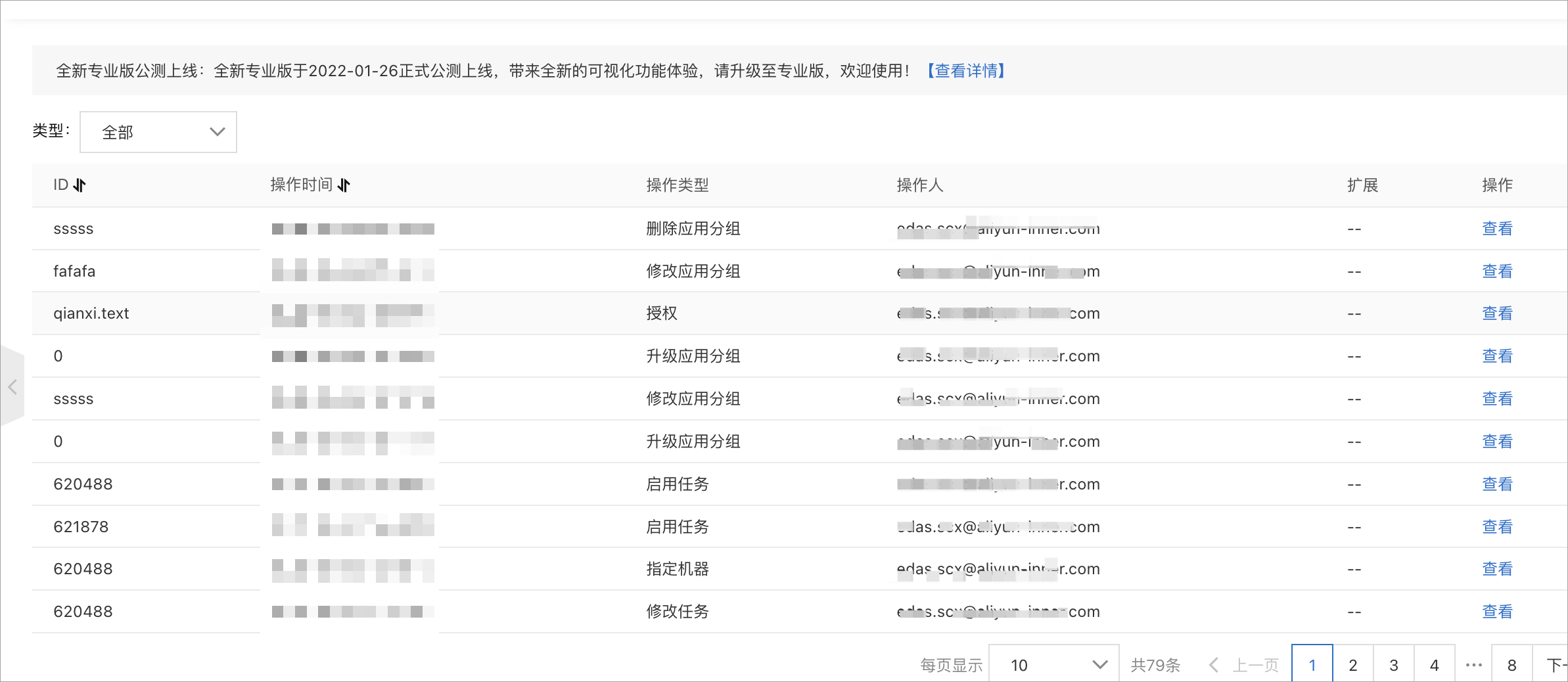
高级特性
任务编排
支持工作流(DAG)进行任务编排,可通过拖拽对前端进行操作。详细的任务状态图方便您了解下游任务执行失败的原因。
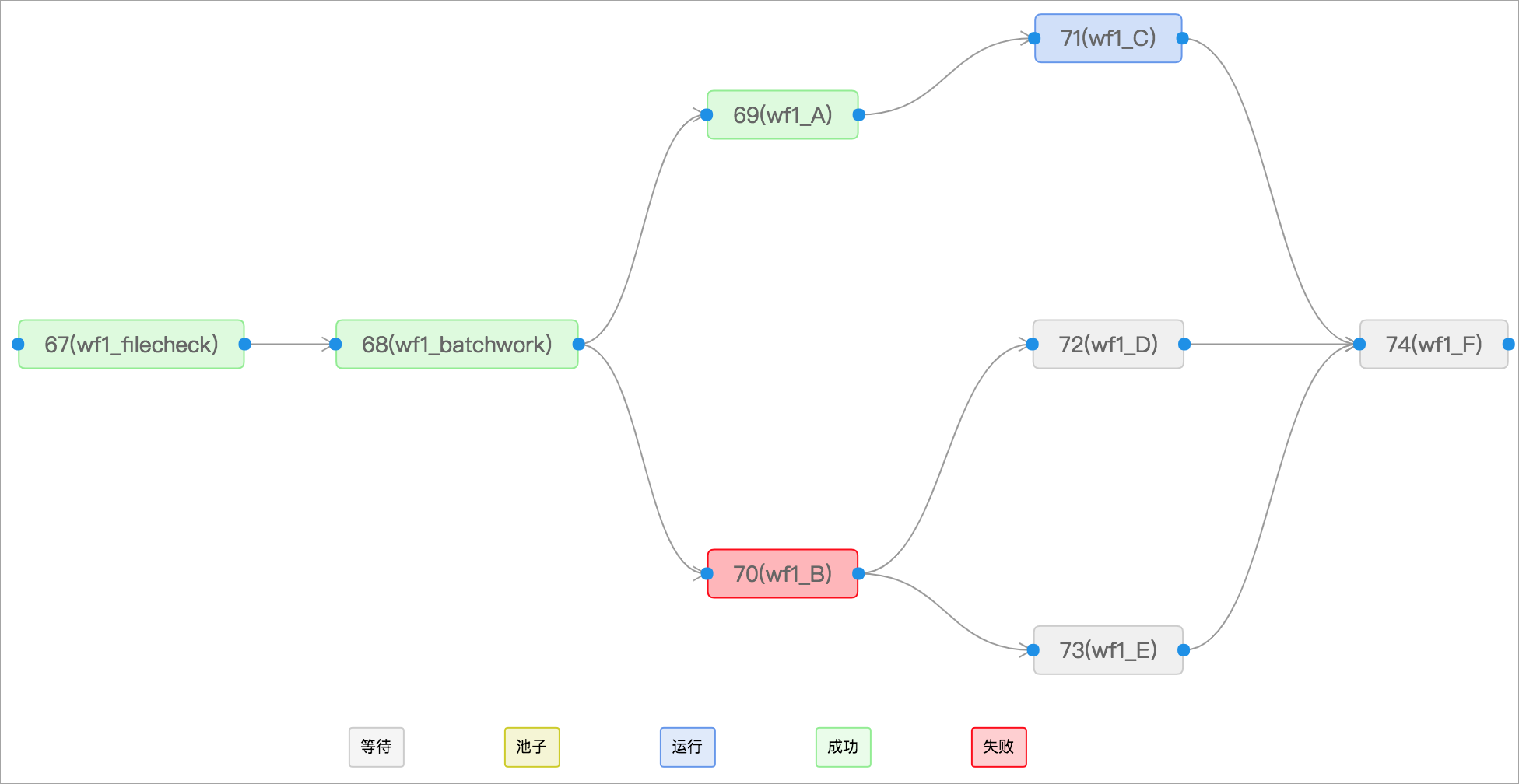
限流
常见场景为夜间离线报表业务,例如,很多报表任务是凌晨1点或者2点开始,需控制应用最大并发的任务数量(否则业务无法支撑),达到并发上限的任务会在队列中等待。若同时要求早上9点前必须完成KPI报表,可以设置KPI任务高优先级,高优先级任务会抢占低优先级任务,从而实现优先调度。
SchedulerX 2. 0支持可抢占的任务优先级队列,只需要在控制台进行配置即可。
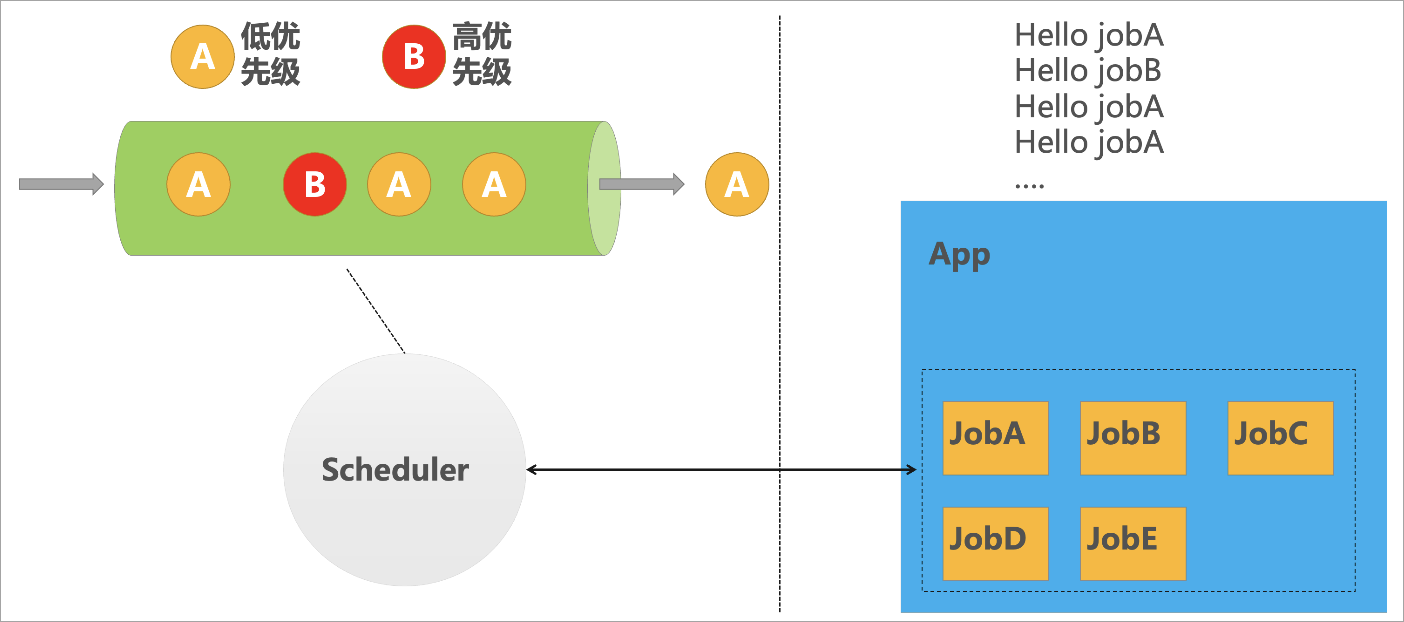
资源隔离
支持命名空间和应用级别资源隔离,支持多租户权限管理。
商业化报警运维
报警
支持通过邮件、钉钉、短信或电话进行任务执行失败、超时和无可用机器报警通知。
运维操作
支持原地程序运行、重刷数据、标记成功、查看堆栈、停止任务和指定机器等。
免运维、低成本
ElasticJob依赖ZooKeeper作为任务存储和任务调度协调,至少需要3个节点的ZooKeeper。如果有节点发生故障,需要重新配置ZooKeeper的服务端和客户端的配置,可能需要重启所有的应用。同时,受ZooKeeper功能限制,如果任务量级比较大,一个ZooKeeper集群将无法支撑住,且ZooKeeper无法水平扩展支持更大的TPS,就需要维护多个ZooKeeper集群,这样会增加机器成本。
通过SchedulerX 2.0托管ElasticJob任务,您无需自己维护ZooKeeper集群,也无需关注任务量级的增长,从而节省了机器和人力的维护成本。
高可用
SchedulerX 2.0采用高可用架构,任务多备份机制,经历阿里集团多年双十一、容灾演练,可以做到整个集群任意2个节点发生故障或者任意一个机房断电,任务调度都不会受到影响。
与开源ElasticJob的区别
对比项 | 开源ElasticJob | SchedulerX为底座的ElasticJob任务 |
Simple任务 |
|
|
Script任务 |
|
|
Dataflow任务 |
|
|
单机 |
|
|
分片广播 |
|
|
定时 | cron | cron、fixed_rate、fixed_delay、one_time |
工作流 |
|
|
可视化 | 无 | 历史记录、日志服务、运行堆栈、操作记录、用户大盘等 |
监控报警 | 邮件 | 邮件、钉钉群、短信、电话 |
运维操作 | 无 | 运行一次、原地重跑、重刷数据、标记成功、停止运行 |
Spring Boot接入方法
以ElasticJob-3.0.2版本为例。更多信息,请参见Demo工程。
步骤一:提前在控制台创建命名空间和应用
提前在SchedulerX控制台创建您的命名空间和应用,具体详情,请参见创建命名空间和创建应用。
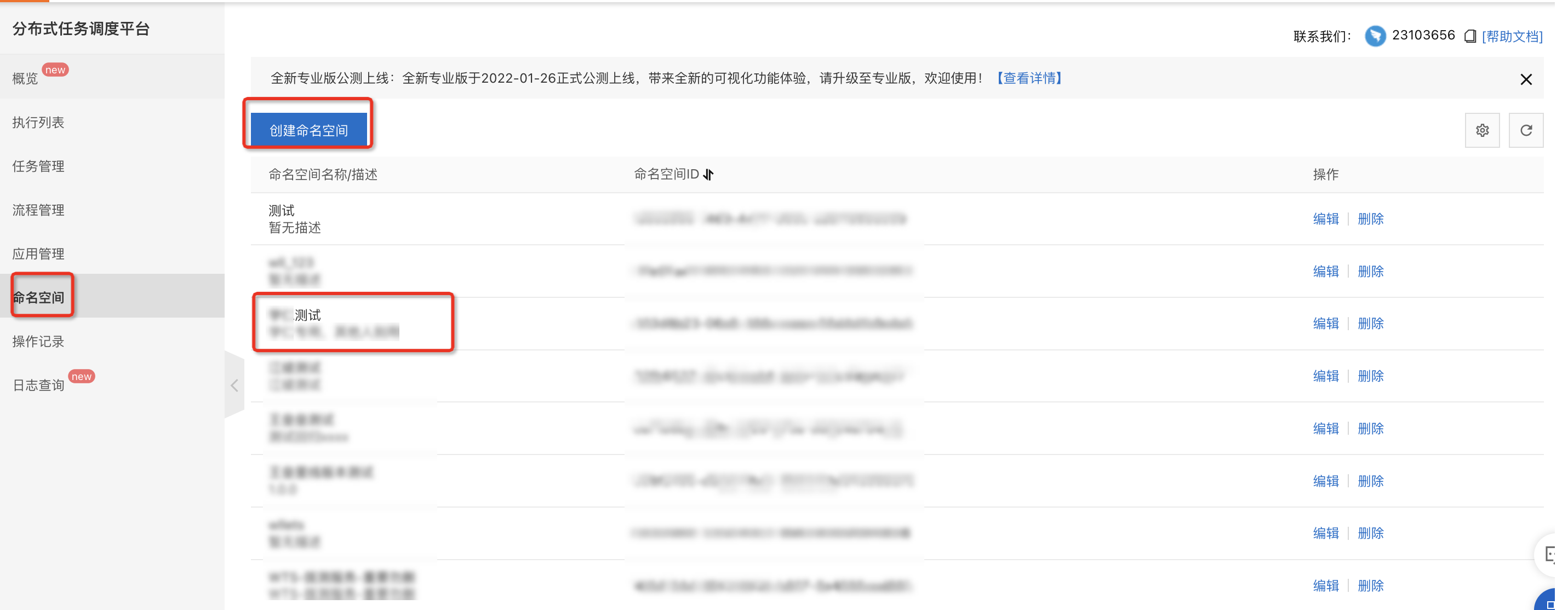

步骤二:增加elasticjob依赖
Pom.xml文件中,在原有elasticjob依赖的上方,添加 schedulerx2-plugin-elasticjob依赖。
<dependency>
<groupId>com.aliyun.schedulerx</groupId>
<artifactId>schedulerx2-plugin-elasticjob</artifactId>
<version>3.0.2.2</version>
</dependency>
<dependency>
<groupId>org.apache.shardingsphere.elasticjob</groupId>
<artifactId>elasticjob-lite-spring-boot-starter</artifactId>
<version>3.0.2</version>
</dependency>步骤三:配置文件添加SchedulerX调度器
application.yml修改配置,添加elasticjob.scheduler=schedulerx配置项,并增加spring.schedulerx2的配置。
schedulerx详细配置参数,请参见Spring Boot应用接入SchedulerX。
elasticjob:
regCenter:
serverLists: 127.0.0.1:2181
namespace: elasticjob-test
scheduler: schedulerx #这里添加调度器为schedulerx,否则还是以原生elasticjob调度
jobs:
simpleJob:
elasticJobClass: com.alibaba.elasticjob.test.processor.SpringBootSimpleJob
cron: 0/10 * * * * ?
shardingTotalCount: 1
overwrite: true
shardingJob:
elasticJobClass: com.alibaba.elasticjob.test.processor.SpringBootShardingJob
cron: 0 * * * * ?
shardingTotalCount: 3
shardingItemParameters: 0=Beijing,1=Shanghai,2=Guangzhou
overwrite: true
#增加如下schedulerx的配置
spring:
schedulerx2:
endpoint: acm.aliyun.com
namespace: 433d8b23-xxxx-xxxx-xxxx-90d4d1b9a4af
groupId: xueren_primary
appKey: xxxxxxxxxxx
regionId: public
aliyunAccessKey: xxxxxxxxxxxx
aliyunSecretKey: xxxxxxxxxxxx如果您需要切换回elasticjob调度器,也可以使用-D参数动态调整。如下所示:
-Dspring.schedulerx2.enabled=false -Delasticjob.scheduler=elasticjob步骤四:启动程序增加自动扫描配置
启动程序增加自动扫描com.alibaba.schedulerx.plugin.*。代码示例如下图所示:

步骤五:配置日志服务(可选)
您可以配置日志服务,收集客户端的日志信息。以log4j2为例,具体操作,请参见阿里巴巴任务调度SchedulerX支持日志服务。
<?xml version="1.0" encoding="UTF-8"?>
<Configuration status="off">
<Appenders>
<Console name="Console" target="SYSTEM_OUT">
<PatternLayout
pattern="%d{yyyy-MM-dd HH:mm:ss.SSS} [%t] %-5level %logger{36} - %m%n" />
</Console>
<SchedulerxLog4j2Appender name="schedulerxLog"
timeFormat="yyyy-MM-dd'T'HH:mmZ"
timeZone="UTC"
ignoreExceptions="true">
<PatternLayout pattern="%d %-5level [%thread] %logger{0}: %msg"/>
</SchedulerxLog4j2Appender>
</Appenders>
<Loggers>
<Root level="info">
<AppenderRef ref="Console" />
</Root>
<Logger name="schedulerx" level="info" additivity="false">
<AppenderRef ref="schedulerxLog" />
</Logger>
</Loggers>
</Configuration>Java执行类代码示例如下:
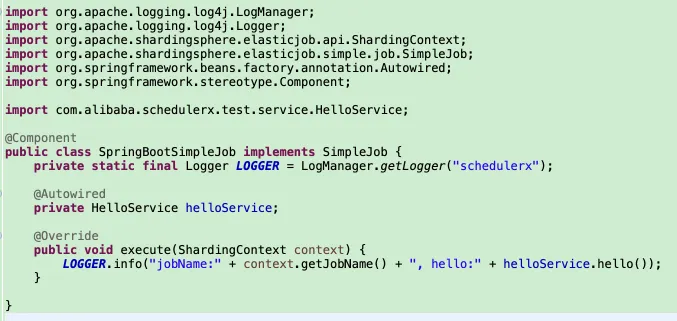
步骤六:验证任务执行
启动程序后,SchedulerX控制台会自动同步任务,其中
调度频率为秒级别,时间类型会改为second_delay。
分片个数大于1,执行方式为分片运行,否则是单机运行。

通过控制台,可以直接看到任务的运行日志。

